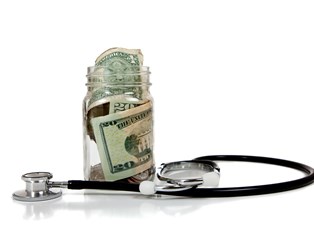ObamaCare jargon can seem confusing (just like any government law), but there are some terms you should be familiar with to understand the Affordable Care Act. Here are some of the most commonly used terms explained.
- Essential Health Benefits: Essential health benefits, enacted by Obama and ObamaCare, define exactly what sort of services you need to have included in your health insurance. These services include ambulatory patient service, emergency services, hospitalization, maternity and newborn care, mental health and substance use services, prescription drugs, rehabilitative and habilitative services, lab services, preventive and wellness care, and pediatric services.
- Preventative Care: Under most insurance policies, preventative care is absolutely free of cost, but what is it? These are tests and procedures you undergo to avoid further, more serious medical situations. This can include annual checkups, immunizations, preventive tests, and more.
- Ambulatory Patient Service: You probably know this term more commonly as outpatient care. This is when you walk into a doctor’s office, get treated, and then leave without having to stay in the hospital.
- Open Enrollment: The Affordable Care Act (ObamaCare) made it a law for everyone to get health insurance. Open enrollment refers to the annual time period in which Americans can buy exchange-based individual insurances for themselves and their families.
- Special Open Enrollment: Some situations may require you to sign up for insurance outside of the regular enrollment period. Major life events like getting married, having a baby, losing your job, or moving could change the type of coverage you need. So, a special enrollment period allows you to sign up for health care outside of the usual enrollment period.
- Individual Shared Responsibility Payment: Most people know that if you don’t get health insurance, you’ll have to pay a fee under ObamaCare and the Affordable Care Act. Individual shared responsibility payment is the name of the tax charged, which is $695 per adult or $347.50 per child for the year of 2016.
- Allowed Amount: The allowed amount may also be referred to as eligible expense, negotiated rate, or payment allowance. This is the maximum amount that is covered by your insurance for your health care services.
- Subsidy: This is income-based financial assistance that is available to people who purchase health insurance through the state-based and federally funded exchanges. Subsidies may come as premium tax credits to lower premiums, cost-sharing reduction to lower out-of-pocket costs, and as Medicaid and CHIP.
- Exemption: Sometimes it can be hard for people to have minimum essential coverage. An exemption is when an individual is allowed to go without the healthcare coverage that’s usually required by ObamaCare. One reason someone may qualify for an exemption is if they have experienced financial hardship or other pressing circumstances.
- Health Insurance Exchange: The Health Insurance Exchange is a platform where people can purchase health insurance plans. Public exchanges provide customers with subsidies and tax credits to help lower the cost of ObamaCare insurance if they are unable to pay on their own.



